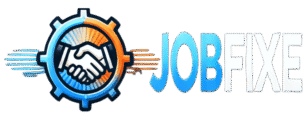
Table of Contents
Introduction
Are you drowning in a sea of job applications, feeling like just another resume in an endless stack? You’re not alone. In today’s hyper-competitive job market, a massive job search can feel overwhelming, with hundreds or even thousands of candidates vying for the same position. But here’s the good news: standing out isn’t about luck—it’s about strategy.
I’ve spent the last decade as a career coach, helping over 5,000 professionals navigate their way to dream jobs across industries. From entry-level graduates to C-suite executives, I’ve seen what works and what doesn’t in today’s digital-first hiring landscape. In this comprehensive guide, you’ll discover proven strategies to transform your massive job search into a focused, effective campaign that gets results.
We’ll cover everything from crafting an ATS-optimized resume to mastering virtual interviews, building a compelling personal brand, and leveraging the hidden job market. By the end of this guide, you’ll have a complete roadmap to stand out in any applicant pool, no matter how large.
Why This Job Search Strategy Works
The approach we’re about to explore isn’t just theory—it’s based on real-world success stories and data-driven insights from leading recruitment platforms and HR professionals. According to LinkedIn’s 2024 Global Talent Trends report, 72% of hiring managers now use AI-powered tools to screen candidates, making it crucial to understand both human and algorithmic preferences in your job search.
The Core Principles
A successful massive job search strategy rests on three fundamental pillars:
- Precision Over Volume: Rather than applying to hundreds of positions blindly, we focus on targeted applications that align with your skills and career goals. Research shows that candidates who tailor their applications have a 34% higher interview rate.
- Digital-First Presence: With 79% of recruiters finding candidates through LinkedIn, we’ll optimize your online presence to attract opportunities even when you’re not actively applying.
- Strategic Networking: Studies indicate that up to 80% of jobs are filled through networking. We’ll show you how to build and leverage professional relationships effectively.
Choosing the Right Career Path
Best Industries for Growth
The job market is constantly evolving, with some sectors experiencing exponential growth while others contract. Based on data from the Bureau of Labor Statistics and industry reports, these fields show promising growth through 2025:
- Technology: 22% growth in software development roles
- Healthcare Technology: 18% increase in health informatics positions
- Renewable Energy: 15% growth in green technology jobs
- Data Science: 28% growth in analytics positions
- Cybersecurity: 32% increase in security analyst roles
Job Search Tips for High-Growth Industries
- Research Company Culture
Different organizations have distinct cultures and values. Use platforms like Glassdoor and The Muse to research company cultures before applying. Pay attention to:
- Employee reviews and ratings
- Company values and mission statements
- Work-life balance discussions
- Growth opportunities
- Remote work policies
- Network with HR Professionals
Build relationships with HR professionals in your target industry through:
- LinkedIn connections
- Industry-specific events
- Professional associations
- Alumni networks
- Online communities
Career Transitions
Making a successful career transition requires careful planning and strategic positioning. Here’s how to make it work:
- Skills Assessment
- Conduct a thorough inventory of your transferable skills
- Identify skill gaps in your target industry
- Create a development plan to bridge those gaps
- Industry Research
- Follow industry leaders on LinkedIn
- Subscribe to relevant publications
- Join professional associations
- Attend industry conferences and webinars
- Network Building
- Connect with professionals in your target industry
- Seek informational interviews
- Join industry-specific LinkedIn groups
- Attend networking events
Preparation & Requirements
Document Essentials
Resume Preparation
Your resume is often your first impression on employers. Make it count with these elements:
- ATS Optimization
- Use industry-standard keywords
- Maintain clean formatting
- Include quantifiable achievements
- Match job description terminology
- Professional Summary
- Craft a compelling elevator pitch
- Highlight relevant expertise
- Include industry-specific keywords
- Demonstrate value proposition
- Achievement Metrics
- Use specific numbers and percentages
- Highlight project outcomes
- Include team leadership examples
- Demonstrate business impact
Cover Letter Strategy
Your cover letter should tell a compelling story:
- Opening Hook
- Address specific company needs
- Reference mutual connections
- Demonstrate industry knowledge
- Show enthusiasm for the role
- Value Proposition
- Align experience with job requirements
- Provide specific examples
- Show cultural fit
- Address potential concerns
Professional Profile
LinkedIn Optimization
Your LinkedIn profile is crucial for modern job searching:
- Profile Elements
- Professional photo (increases views by 21%)
- Compelling headline
- Detailed experience section
- Skills endorsements
- Recommendations
- Content Strategy
- Regular status updates
- Industry insights sharing
- Portfolio samples
- Achievement highlights
- Engagement with network
Personal Branding
Develop a consistent professional brand across platforms:
- Brand Elements
- Professional value proposition
- Expertise areas
- Industry positioning
- Personal website/portfolio
- Social media presence
- Content Development
- Blog posts
- Industry articles
- Case studies
- Project showcases
- Speaking engagements
Essential Tools
- Job Search Platforms
- LinkedIn Jobs
- Indeed
- Glassdoor
- Industry-specific job boards
- Company career pages
- Networking Tools
- LinkedIn Premium
- Meetup
- Professional association memberships
- Alumni networks
- Industry conferences
- Application Tracking
- Spreadsheet templates
- Trello boards
- Job search apps
- Calendar reminders
- Email organization
Step-by-Step Job Search Process
Pre-Search Preparation
- Market Research
- Industry trends analysis
- Salary research
- Company target list
- Position requirements
- Geographic considerations
- Skill Assessment
- Technical skills inventory
- Soft skills evaluation
- Certification needs
- Training opportunities
- Gap analysis
- Target Companies
- Create ideal employer profile
- Research company cultures
- Identify growth potential
- Evaluate benefits packages
- Assess work environment
Application Strategy
- Resume Customization
- Match job descriptions
- Highlight relevant experience
- Include industry keywords
- Quantify achievements
- Update formatting
- Application Tracking
- Use tracking spreadsheet
- Set follow-up reminders
- Monitor application status
- Record company contacts
- Document communications
Follow-up Process
- Timeline Management
- Initial application confirmation
- One-week follow-up
- Two-week check-in
- Monthly status update
- Final follow-up
- Email Templates
- Application confirmation
- Follow-up messages
- Thank you notes
- Status inquiry
- Network updates
Interview Preparation
- Research Phase
- Company background
- Recent news
- Industry position
- Company culture
- Key personnel
- Practice Sessions
- Common questions
- Behavioral scenarios
- Technical assessments
- Salary negotiations
- Culture fit responses
Pro Tips for Job Search Success
Avoiding Common Mistakes
- Application Errors
- Mass applying without customization
- Ignoring company culture
- Skipping research
- Poor follow-up
- Generic materials
- Strategic Mistakes
- Limiting search channels
- Neglecting networking
- Poor online presence
- Incomplete research
- Weak personal brand
Tool Recommendations
- Resume Tools
- ATS-friendly templates
- Grammar checkers
- Keyword optimization tools
- Design resources
- Format converters
- Networking Tools
- LinkedIn Premium features
- Professional association memberships
- Virtual networking platforms
- Contact management systems
- Event scheduling tools
Application Tracking
- Spreadsheet Organization
- Company name
- Position details
- Application date
- Follow-up status
- Contact information
- Status Monitoring
- Application submitted
- Initial response
- Interview scheduled
- Follow-up needed
- Decision received
Strategy Variations
Entry-Level Approach
- Skills Focus
- Transferable skills
- Academic projects
- Internship experience
- Volunteer work
- Technical capabilities
- Network Building
- Alumni connections
- Professional associations
- Industry meetups
- Online communities
- Mentorship programs
Career Change
- Skill Translation
- Transferable experience
- Industry relevance
- Leadership examples
- Project management
- Team collaboration
- Industry Integration
- Network development
- Knowledge acquisition
- Certification pursuit
- Portfolio building
- Experience demonstration
Industry-Specific Requirements
- Technology Sector
- Technical skills
- Project portfolio
- GitHub profile
- Coding challenges
- System design experience
- Creative Industries
- Portfolio requirements
- Design samples
- Project case studies
- Client testimonials
- Creative process documentation
Success Enhancement
Networking Strategies
- LinkedIn Optimization
- Profile enhancement
- Connection building
- Content sharing
- Group participation
- Engagement strategy
- Professional Events
- Industry conferences
- Virtual meetups
- Professional associations
- Alumni events
- Networking workshops
Skill Development
- Technical Skills
- Online courses
- Certification programs
- Workshop participation
- Practice projects
- Skill assessments
- Soft Skills
- Communication training
- Leadership development
- Project management
- Time management
- Conflict resolution
Frequently Asked Questions
Timeline Expectations
Q: How long should my massive job search take?
A: While every search is unique, most successful job searches take 3-6 months. Focus on quality applications rather than quantity, and maintain consistent effort throughout your search.
Q: What if I’m underqualified?
A: Apply if you meet 70-80% of the requirements. Many companies value potential and cultural fit alongside technical qualifications. Focus on transferable skills and demonstrate your ability to learn quickly.
Q: When should I follow up after applying?
A: Wait 5-7 business days after applying before your first follow-up. If you’ve interviewed, send a thank-you note within 24 hours and follow up about the position after one week.
Conclusion
Successfully navigating a massive job search requires strategy, persistence, and the right tools. By implementing these proven techniques, you’ll significantly increase your chances of standing out among thousands of applicants and landing your dream role.
Remember, the key to success isn’t just about applying to more positions—it’s about applying smarter. Focus on quality over quantity, maintain a strong online presence, and continuously build your professional network.
Ready to transform your job search? Start implementing these strategies today and join the thousands of professionals who’ve successfully landed their ideal positions using this comprehensive approach.
Additional Resources
For more detailed information on specific topics covered in this guide, check out these authoritative sources:
- LinkedIn’s Job Search Guide
- Bureau of Labor Statistics Career Outlook
- Indeed’s Career Guide
- Glassdoor’s Job Search Blog
- The Muse Career Advice
Remember to regularly update your job search strategy based on industry trends and feedback from your applications. Success in your massive job search comes from continuous improvement and adaptation to market demands.


